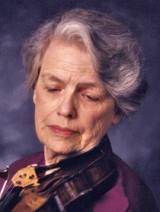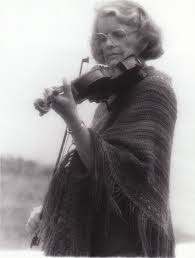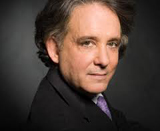Music therapy
Music: transpersonal experiences and the Bonny Method of Guided Imagery and Music
Abstract
Music — as used in the Bonny Method of Guided Imagery and Music — has the power to stimulate and evoke transpersonal experiences. The transpersonal experience has a value in itself. It also influences the whole psychotherapeutic process of transformation, leading to healing, spiritual and psychological development, and further integration. In this article, the author also presents research describing the specific nature of these experiences.
A musical gift
It is the first day of November. The fog is thick, covering the landscape outside my window. It is 10 in the morning and there is still no sign of day — or sunlight brightening up this new day. The leaves that still hang onto the branches of the trees look tired and pale. The bright colours of red and orange have turned into lighter shades of yellow and brown. It is warm for the season, 9°C, but not warm enough for my physical body to dance with joy. The outer circumstances of the morning influence my inner spirit as well, creating an inner world of shades of grey, black and possibly beige.
I sit down by the computer, which triggers a memory of last night: I found a site of sacred music from faith traditions around the world! I turn it on. The music travels from this Internet site (originating in a place far away) to my computer in Sweden, into my headphones, my ears, filling my whole being: Sacred music from the Sufi tradition, Buddhist chants, Jewish and Hindu sacred music, classical music created for church and hymns like Amazing Grace.
The music fills my consciousness and suddenly my inner state has changed. I feel lighter. I feel ‘at home’ in this music. It fills me with a sense of meaning and spiritual longing. The grey qualities of the day have been transformed into a sense of being at home in myself, in life, in this day.
Even my emotional reaction to the weather outside has changed. The fog has a shimmer — a quality of beauty. Its white impression offers a sense of mystery. The leaves’ lack of colour and life reminds me of the changing nature of life itself. Life-death-life-death. A mystery of impermanence that exists simultaneously with the Source that never dies.
My inner state changed and deepened suddenly! I remember the words published on this Internet site: “… world sacred music shares the purpose of transcending, uniting, and elevating the human spirit (1).” The Mother says, “The role of music lies in helping the consciousness to uplift itself towards the spiritual heights (2).”
In my own life, music has been an agent of change. I have grown from a young atheist into a person who treasures spiritual life (despite my shortcomings and difficulties on the path). Playing the piano or organ has created experiences like the one described above. The music has communicated a sense of meaning in life. I have been uplifted and felt at home in the music. The music has been like a mother. It has held me in its arms and nurtured me deeply.
I have also had the fortune to experience and work with the music therapy method, The Bonny Method of Guided Imagery and Music. The music, as used in this method, has helped me to connect to deeper aspects of myself. It has evoked experiences of a transcendental nature and facilitated a personal process of healing and transformation. These experiences highly influenced the personal change I described earlier, awakening me to the path of the spiritual life. This method has also trained me in listening to music. It has opened me up for a deeper, more subtle mode of listening.
In this article, I will focus on experiences of a transpersonal nature evoked by classical music using The Bonny Method of Guided Imagery and Music method. This is how it all started.
Musical peak experiences
On the 21st September 1948, Helen Bonny — a 27-year-old American housewife and mother with a degree in violin performance — was asked to play at a church women’s meeting. She played The Swan from The Carnival of the Animals by Saint-Saëns. She describes the performance that was to change her life:
“All went well until the repetition of the first theme. Then everything changed. It was as if the violin was not my own; bow arm and fingers were held in abeyance/obedience to a light and wonderful infusion that created an unbelievable sound I knew I had not ever produced before. The notes mellowed and soared with exquisite grace. Astonished, delighted, I almost stopped what I was doing to fully hear the beauty. Fortunately, I thought better of it and provided the bow and fingers, but without the vibrato or bow pressure to create a good sound. Nonetheless, the beautiful music continued to the end. I was trembling when I finished, and as I sat down I began to shake even more violently (3).”
After a short sermon, she was asked to play again:
“I was still shaking uncontrollably and realized that controlling the bow and fingers would be impossible. Nevertheless, I hoped for a repeat of the marvelous music saying to myself, ‘If it happened once, it can happen again.’ And after the first few shaky notes of Bach-Gounod’s Ave Maria, it did. If anything, it was even more beautiful and expressive than before (4).”
This inner experience is similar in nature to the experiences of ‘magic moments’ that Gabrielson describes in his study, Strong Experiences with Music: moments “when everything works. There are no problems whatsoever; it is as if somebody else takes care of the performance — ’somebody is playing me’, ‘the music plays itself’ — one feels as if one is a listener rather than a performer. Such experiences are real ’peaks’(5) ….”
For Helen Bonny, this experience opened inner doors to new experiences with music. It was the start of a new and inspiring search: how to use music to stimulate peak experiences. A learning process of growth that would continue throughout her whole life. She earned a degree in Music Therapy and later developed the model Guided Imagery and Music (GIM) — later to be called The Bonny Method of Guided imagery and Music. (I will use the acronym GIM, since it is still the term used in the spoken language.)
GIM is a method developed to stimulate peak experiences and gain psychological and spiritual transformation using music. The method was developed simultaneously as the school of humanistic psychology grew in popularity. Maslow’s pyramid of needs and theories of peak experiences and self-actualisation gained influence in the world of therapy and human consciousness in general. At the end of the 1960s, Helen Bonny conducted research on her first GIM music programmes at Union Graduate School. Since then, the method has continued to develop and grow. At the World Congress of Music Therapy in 1999, GIM was named as one of the five main music therapy methods used internationally.
The Bonny Method of Guided Imagery and Music
The GIM session starts with a verbal conversation, for the person to express his/her state, needs and aspirations for growth. This is followed by a relaxation of the body. The mind becomes quieter. The ego slowly relaxes its strong grip and the consciousness starts to expand. The doors to the inner life open up. The guide helps the person to get in touch with him/herself by connecting to inner imagery, emotions and other sensations.
By relaxing, letting go and turning inwards, the person is also opening up for a deeper and subtle mode of listening. Rumi says: “The quieter you become the more you are able to hear (6).” The composer Pauline Oliveros describes the role of deep listening:
“Deep listening involves going below the surface of what is heard and also expanding to the whole field of sound whatever one’s usual focus might be. Such forms of listening are essential to the process of unlocking layer after layer of imagination, meaning, and memory down to the cellular level of human experience (7).”
The classical music is turned on and the guide leads the person/the traveller into the musical landscape: “Listen to the music. Open yourself up to the music. Let the music take you wherever you need to go.” To help the person to connect to the music is important. The music contains all the elements that make this process of change possible. To connect to the music, to listen deeply and open up to all it has to offer facilitates this process.
The Western classical music that is used in GIM has multi-dimensional qualities that allow the music to touch and evoke many levels of consciousness simultaneously. The melody, pitch, harmony, timbre, dynamic, rhythm and tempo, movement and energy, form and structure, the dialogue between different instruments, the process of building and releasing tension influence the traveller. By being in a state of open, concentrated receptivity and allowing for an intimate encounter with the music, the listener can receive the full benefit of the musical experience. (Listen to Bach: Piano Concerto no 5, first movement, or Barber: Adagio for Strings, in a relaxed, open state to get a taste).
The music helps the person to get in touch with emotions, memories, sensations and different states of consciousness. By connecting to the music, the traveller can find new solutions to problems, gain a new perspective on life, and experience new states of consciousness that lead to transformation. The music functions as a co-guide/co-therapist on the path.
During the inner journey with the music, the guide follows the process that is unfolding closely. The person is encouraged to let the guide know what is happening. This may seem like a hindrance in the beginning, but it actually increases the sense of safety. The guide is grounded in the reality of here and now and is present if strong emotions are evoked. The traveller is not alone. This sense of safety helps the person to connect with emotions and to increase the depth of the experience in general.
As the inner journey with the music comes to an end, the guide helps the traveller to return to an ordinary state of consciousness. A verbal conversation takes place to further understand the content of the journey. To integrate the experience is important. This process usually takes time and happens gradually. The person is also encouraged to continue the process of integration by him/herself.
Transpersonal experiences during GIM
An inner transformation and change often happens in the moment of a peak experience. Helen Bonny emphasised the musical peak experience and its potential for healing. According to Gabrielson, strong experiences of music may “provide new insights, open new possibilities, and arouse certain needs (8).” They can also “reflect and confirm one´s own person (9).”
Musical peak or transpersonal experiences are (usually) positive experiences for the listener or performer. But what is the nature of such an experience? Since the terms “peak experience” and “transpersonal experience” have become fashionable words, used to express a range of experiences, this question seems important to explore.
Therefore, I will introduce two research studies of transpersonal experiences. The focus of these studies was to gain further knowledge and a deeper understanding of the nature of transpersonal experiences evoked during GIM-sessions.
Abrams found nine themes of transpersonal experiences during GIM-sessions (10):
1. Body and physicality: physical sensations “beyond the conventional scope of human experience, and a sense of self expanded beyond the limits of the body (11).”
2. Healing and wholeness: “Forms of self-integration and wholeness which took place at a core level of being, transcending individual, personal proportions and the boundaries of the human body (11).”
3. Self: “A core sense of self, beyond an individual, specific, biographical identity, as well as fluid, impermanent forms of self (11).”
4. Relationship: “Aspects of relationship transcending individual, human purposes (12).”
5. Humanity: “A sense of global, comprehensive significance and purpose transcending ordinary humanity (12).”
6. Life-meaning: “Understandings of life meaning which were comprehensive, which concerned the core level of being, and which involved a sense of ultimate mystery (12).”
7. Spirituality: “Transcendence of mortal boundaries, embracing sacredness or goodness, and encountering or identifying with souls, spiritual beings, or Spirit itself (12).”
8. Qualities of consciousness: “States of awareness that were ethereal or mystical, comprehensive, and acute beyond the limits of mortality, and which transcended the duality of self and universe (12).”
9. Ways of experiencing the music: “Apprehensions of the music’s core depths (beyond its superficial qualities), instances of utterly embracing or merging with the music, and a sense of being expanded beyond conventional proportions through the music (12).”
In another study, Lewis explored the nature of transpersonal experiences of 128 GIM sessions (13). The transpersonal experiences were first assigned to eight categories. Each category fit into a level of consciousness as described by Wilber (14).
Level 5: lower subtle/psychic-astral realm (Wilber)
Transpersonal GIM-experience:
Category 1 — Body Change
Category 2 — Past Life/Other Psychic
Level 6: higher subtle realm (Wilber)
GIM-experience:
Category 3 — light/energy
Category 4 — deep positive emotion
Category 5 — archetypal/spiritual
Category 6 — wisdom
Level 7, 8, 9: causal realm, ultimate realm (Wilber)
Transpersonal GIM-experience:
Category 7 — unitive
Category 8 — space/time (15)
In 52% of the GIM-sessions, an experience of a body change occurred and/or images suggesting “a past life, communication with a loved one who has died, or other psychic phenomena (16)” — Wilber’s level 5, the lower subtle realm.
76 % of the sessions contained experiences of light/energy, deep positive emotion, archetypal/spiritual experiences and/or wisdom — Wilber´s level 6, the higher subtle realm.
In 30 % of the sessions, the traveller had transcendent, mystical and/or unitive experiences — Wilber’s level 7-9, the lower and higher causal and ultimate realm. For anyone who is interested in exploring this topic further, a study of 140 GIM- experiences of Energy and Light has been published previously in NAMAH (17).
Transformation and growth
The nature of transpersonal experiences evoked by the GIM-method varies. It is as rich as the human experiences of consciousness in general. By using relaxation, music and imagery, the consciousness of the traveller can expand and the nature of Reality can be explored.
The potential of the GIM-method to facilitate such transpersonal experiences is high. Clark describes the GIM-method:
“It is a method which opens the way to deeply aesthetic experiences with music which can point the way towards the all-pervading Beauty, which may be the true nature of the Cosmos (18).”
The transpersonal experiences described are state experiences — not expressions of a specific developmental stage. A transpersonal state experience can occur “at virtually all stages of growth (19).” For a permanent development to take place, “it is necessary to bring out what is experienced and make it a power for transformation both of the inner and the outer being (20).”
The transpersonal state experience has a value in itself, at the same time as it plays an important role in the process of transformation and growth during the GIM-journey. It influences the whole psychotherapeutic process and can therefore lead to a permanent change of the person (a stage development). Goldberg states: “GIM appears to be especially effective for the integration of spiritual and psychological growth as is evidenced by the frequency of spiritual states of consciousness occurring during psychodynamic therapy. The Bonny Method of Guided Imagery and Music is a multi-dimensional process of expansion toward integration, healing and transformation (21).”
Transpersonal experience: a treasure or trap?
Everyone on a spiritual path has heard the warnings of spiritual teachers not to get attached to spiritual experiences. Harvey says: “The mystical traditions … warn us … of what will happen if we abuse the powers that will inevitably come to us on the journey. To use such powers for our own ends and not in pure surrender to the will of the One invites destruction (22).”
A boosted ego or an increased spiritual pride are always dangers on the path. Sri Aurobindo says:
“Be on your guard against any suggestion that tries to raise up your egoism, as for instance that you are a greater sadhak than others or that your sadhana is unique or of an exceptionally high kind.… egoism is the greatest danger of the sadhana and is never spiritually justifiable. All greatness is God’s: it belongs to no other (23).” Let us take the warnings seriously and at the same time honour the experiences and their Source.
Transpersonal experiences can offer meaning and hope, wisdom and a new vision of Reality, an opened sense of compassion and unity with others, healing, transformation and personal growth, etc. These experiences can nurture us and offer inspiration, guidance and fuel to walk the path of evolution. In a society that is highly influenced by the increase in radicalism, the widening gap between the rich and poor, the climate change and its consequences for human beings, all experiences that offer hope, personal transformation and compassionate action are treasures on the path.
Music is one of many tools on this journey. Let us listen deeply and open to the treasures hidden within. “Music jealously guards her deepest secrets. She yields them only to those who listen with full concentration. To these she extends a life-nourishing embrace (24).”
References
1. [Online] Available from: http://www.sacred musicradio.org [Accessed 1st November 2014].
2. The Mother. Collected Works of the Mother, Volume 12. 2nd ed. Pondicherry: Sri Aurobindo Ashram Trust; 2002, p. 240.
3. Lindquist Bonny Helen. Autobiographical Essay. In Summer L (ed.). Music Consciousness: The Evolution of Guided Imagery and Music. Gilsum; NH: Barcelona Publishers; 2002, p. 5.
4. Ibid, p. 6.
5. Gabrielson A. Strong Experiences with Music. In Juslin PN, Sloboda JA (eds.) Handbook of Music and Emotion: Theory, Research, Applications. Oxford: Oxford University Press; 2010, p. 566.
6. Rumi. [Online] Available from: http://www.sacredmusicradio.org [Accessed 1st November 2014].
7. Becker J. Deep Listeners. Bloomington, IN: Indiana University Press; 2004, p. 2.
8. Gabrielson A. Strong Experiences with Music. In PN Juslin & J. A. Sloboda JA (eds.) Handbook of Music and Emotion: Theory, Research, Applications. Oxford: Oxford University Press; 2010, p. 563.
9. Ibid, p. 564.
10. Abrams B. Definitions of Transpersonal BMGIM Experience. Nordic Journal of Music Therapy 2002; 11 (2): 103-26.
11. Ibid, p. 119.
12. Ibid, p. 120.
13. Lewis K. The Bonny Method of Guided Imagery and Music: Matrix for Transpersonal Experience. Journal for the Association of Music and Imagery 1999; 6: 63-85.
14. Ibid, p.72.
15. Ibid, p. 72.
16. Ibid, p. 74.
17. Carlsson M. The Power of music. NAMAH 2002; 10 (3): 12-22.
18. Clark, M.; The Bonny Method and Spiritual Development. Journal for the Association of Music and Imagery 1999; 6: 55-62.
19. Wilber K. Integral Spirituality. Boston: Integral Books; 2006, p. 89.
20. Sri Aurobindo. Birth Centenary Library, Volume 23. Pondicherry: Sri Aurobindo Ashram Trust; 1970, p. 744.
21. Goldberg FS. A Holographic Field Theory Model of the Bonny Method of Guided Imagery and Music. In Bruscia Ke, Grocke DE (eds). Guided Imagery and Music: The Bonny Method and Beyond. Gilsum: NH: Barcelona Publishers; 2002, p. 374.
22. Harvey A. The Hope: A Guide to Sacred Activism. London: Hay House UK Ltd; 2009, p. 85.
23. Sri Aurobindo. SABCL, Volume 23. p. 1048.
24. Lamb GM. To enjoy music, stop to really listen. Christian Science Monitor October 15, 1999;18.
Marie Carlsson is a music therapist, musician and retreat leader currently living in Växjö, Sweden.
Share with us (Comments,contributions,opinions)
When reproducing this feature, please credit NAMAH,and give the byline. Please send us cuttings.









